AWS Cloud Practitioner CLF-C02
Billing and Pricing
General Billing in AWS
Welcome, Cloud Practitioners! In this lesson, we'll explore essential AWS billing concepts, including pricing fundamentals, cost optimization strategies, the benefits of elasticity, and an overview of AWS pricing models. This high-level guide will help you understand how AWS billing works and how to manage costs effectively.
Fundamentals of AWS Pricing
AWS pricing is driven by several key factors, much like renting a car. When renting, you consider the type of vehicle, rental duration, and mileage. Similarly, AWS billing is based on:
- Compute: The processing power used—measured by the number and size of CPUs and the amount of RAM.
- Storage: The amount of data stored and the duration for which it is held.
- Networking: Outbound data transfer, with most inbound data being free.
For example, launching an EC2 instance (such as an R5 XLarge with four CPUs and 32 GB RAM) and attaching a 50 GB EBS volume with significant outbound traffic (e.g., 1,000 GB) will incur charges based on compute time, storage duration, and data transfer.
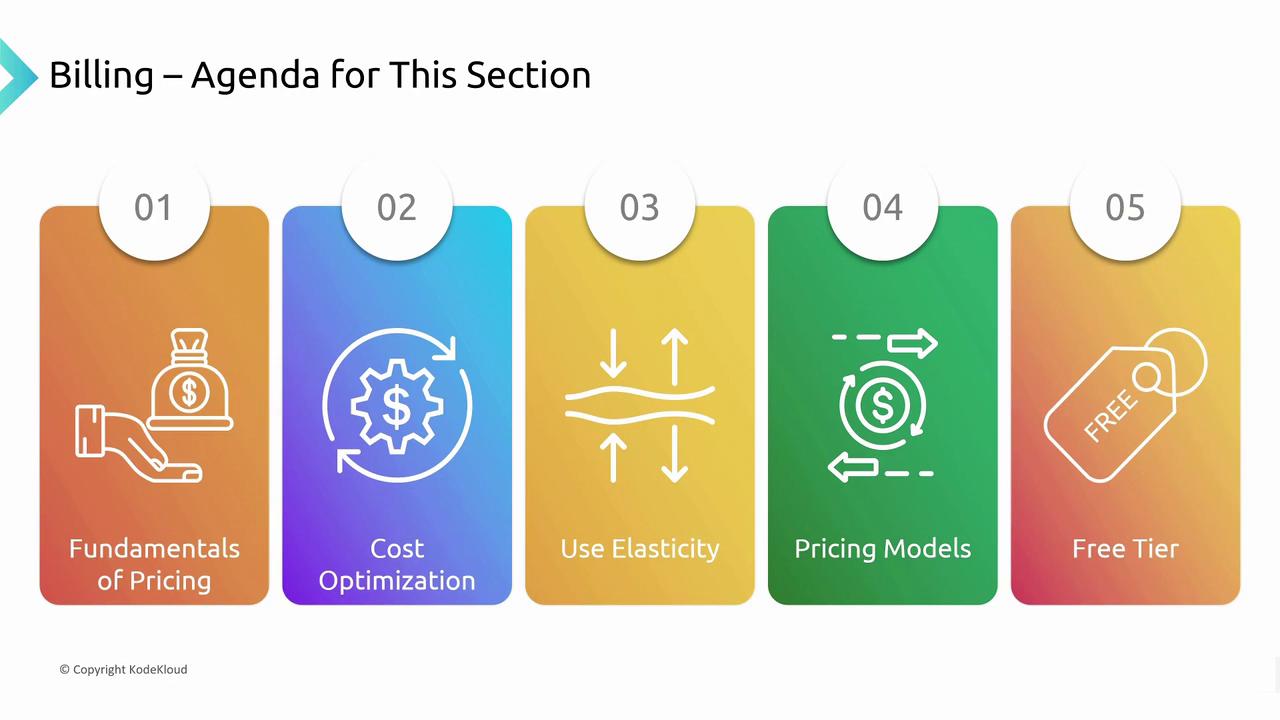
Think of AWS billing as renting a car—paying based on performance (compute), size (memory and processors), and how far you drive (storage duration and outbound data).
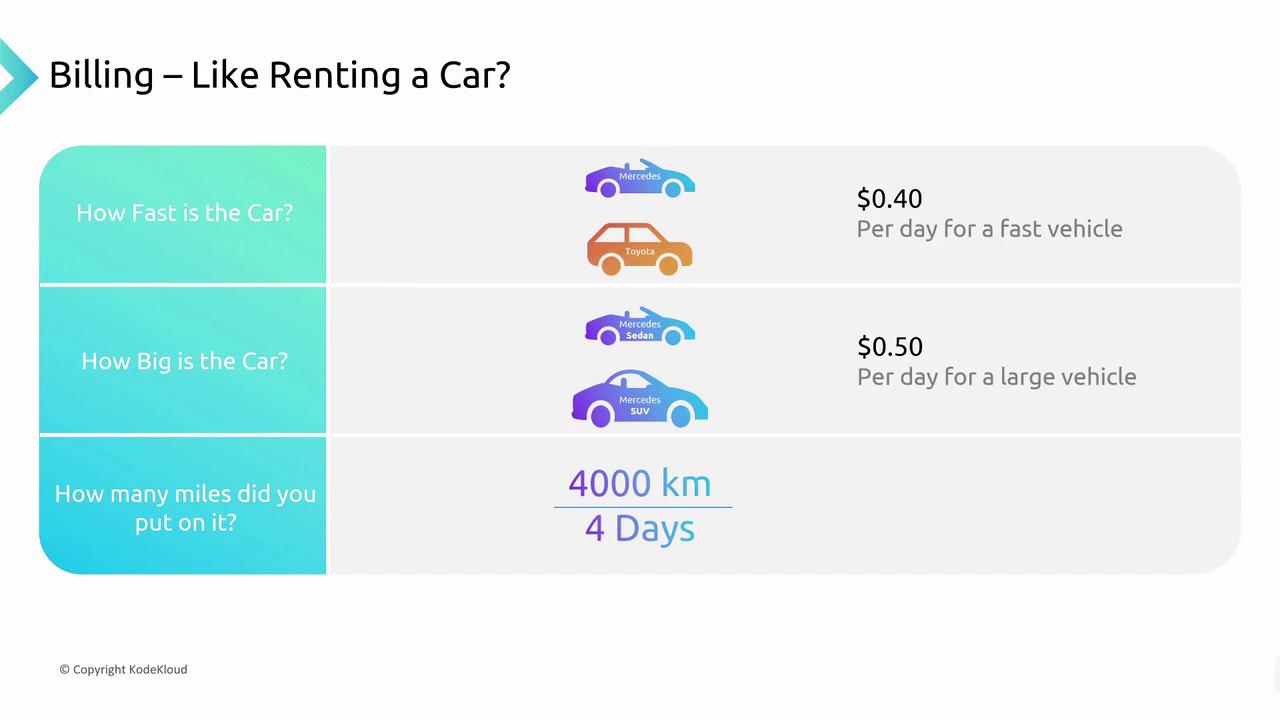
There are two primary pricing dimensions:
- Duration Pricing: Services like EC2 and RDS charge based on the time the resources are running.
- Request Pricing: Serverless services, such as AWS Lambda, bill you for the number of requests and the execution time in milliseconds or seconds.
For example, AWS Lambda bills based on memory and compute power allocation. The free tier includes 3.2 million seconds and 400,000 GB-seconds per month. Beyond the free tier, you pay only a fraction of a penny per second multiplied by the memory size allocated.
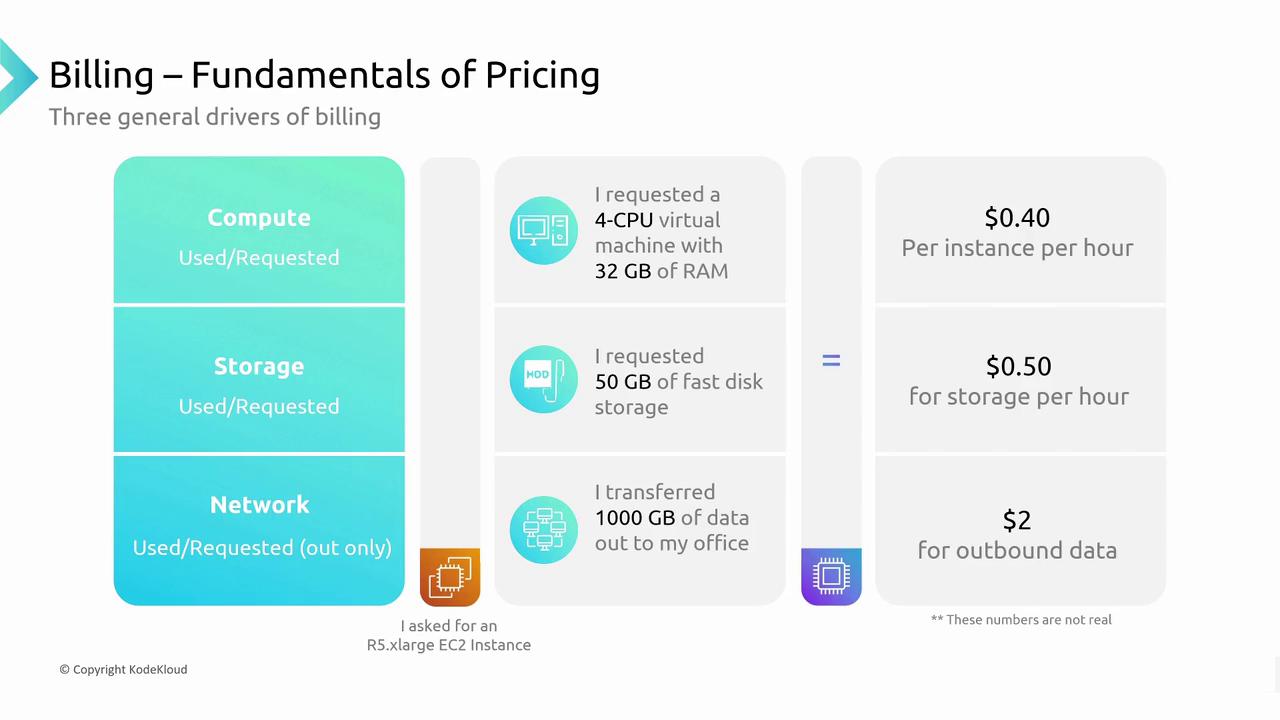
Occasionally, both duration and request pricing apply. A web application might run on a reserved server under duration pricing while processing millions of data requests billed under request pricing.
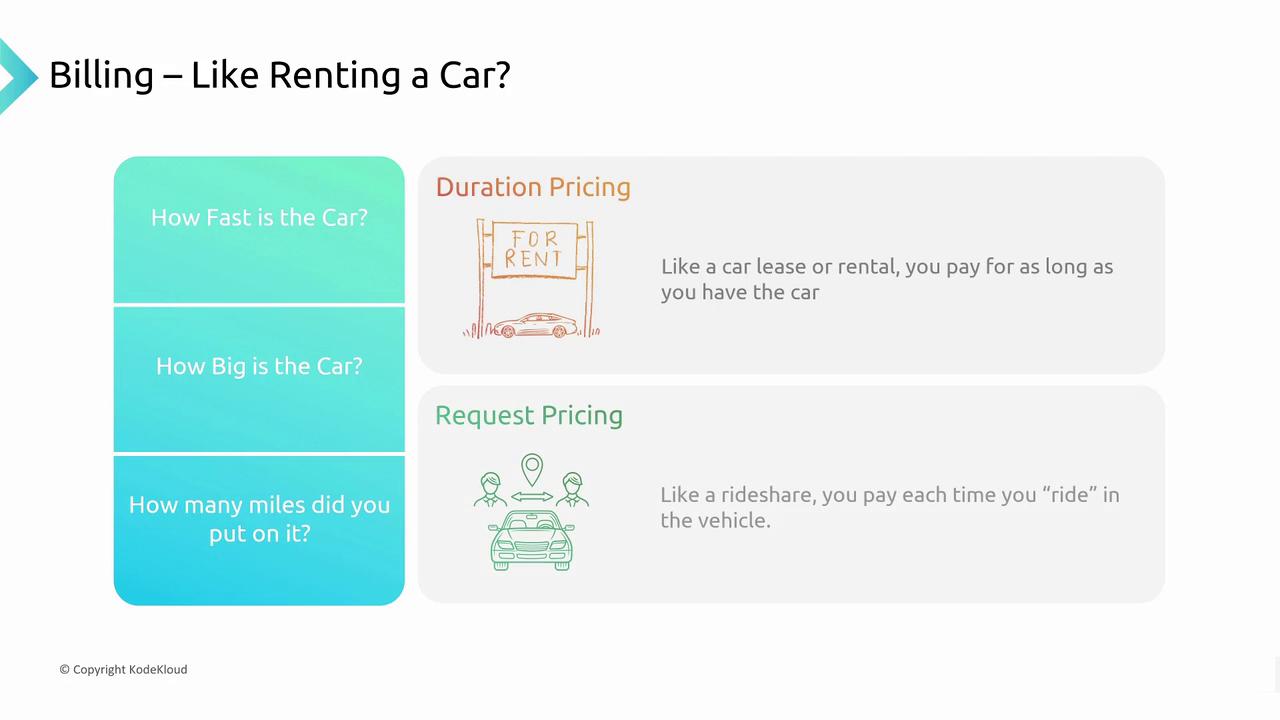
Request pricing is particularly common in serverless computing, where you pay only for the compute time consumed during each invocation.
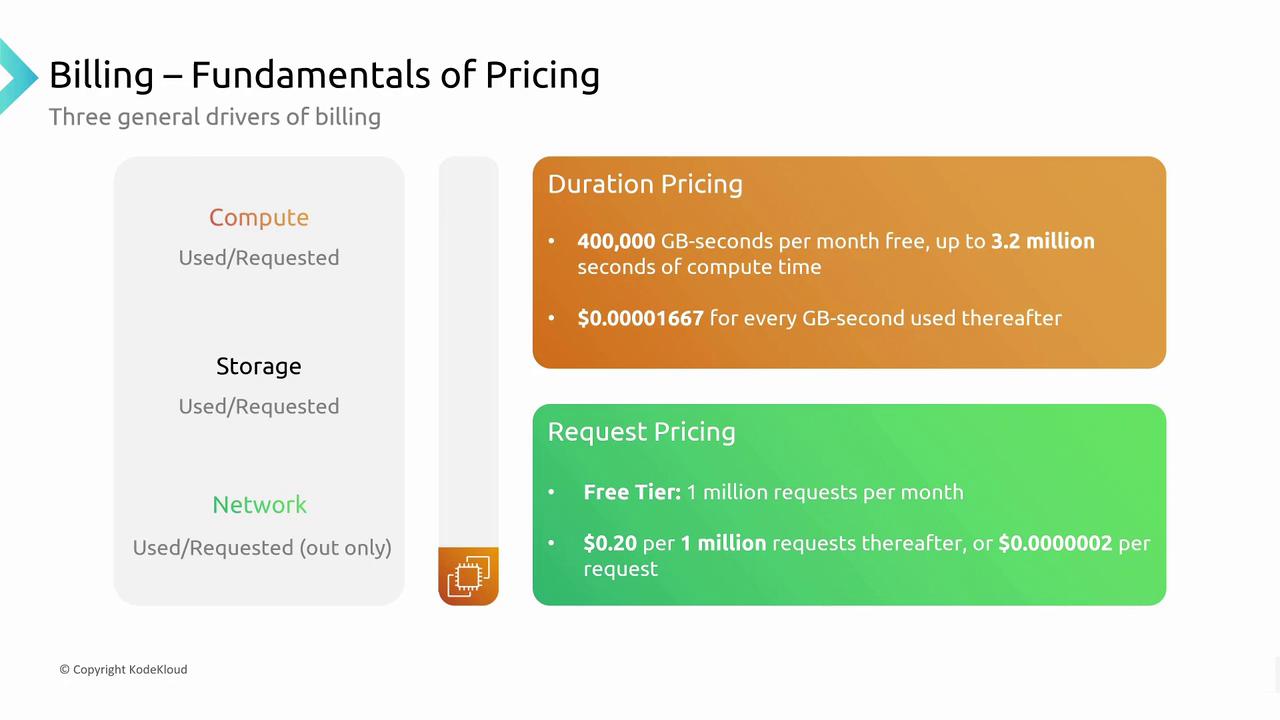
Cost Optimization Strategies
Managing costs is crucial in AWS because every service can have financial and security implications. Here are some best practices:
- Understand Your Pricing: Before deploying, review the AWS Pricing Guides or use the AWS Pricing Calculator to estimate costs.
- Prefer Managed Services: Managed or serverless services often use request pricing and incur minimal duration charges, making them more cost effective than unmanaged services.
- Right-Size Your Resources: Continuously monitor usage and adjust your resource allocation. If only a portion of your virtual machines is fully utilized, scale down accordingly and use autoscaling to adjust capacity based on demand.
- Leverage AWS Optimization Tools: Use services like Compute Optimizer and Trusted Advisor to receive recommendations for better resource utilization and cost reduction.
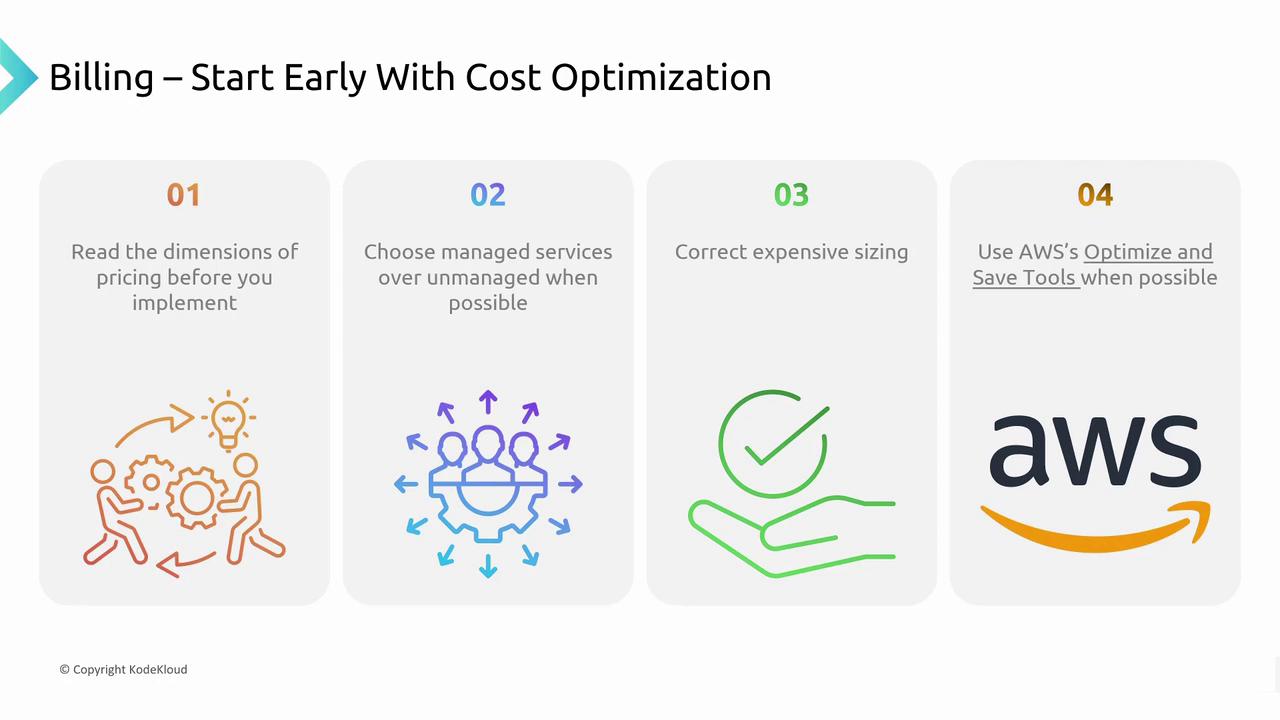
Tip
Regularly review your spending before, during, and after projects to adjust resource usage for maximum cost efficiency.
Maximizing the Benefits of Elasticity
Elasticity—the ability to scale resources up or down based on demand—is a core strength of AWS. Use autoscaling features and infrastructure-as-code tools (such as AWS CloudFormation or Terraform) to manage resources dynamically. For example, scale down your web servers during low-traffic periods and scale up during peak times. Additionally, consider pausing non-critical resources, like databases, during off-peak hours to further reduce costs.

AWS Pricing Models
AWS offers several pricing models to suit different business needs:
- On-Demand: Pay for resources only when they are in use. This model is best for testing or unpredictable workloads.
- Savings Plans: Commit to a certain spend upfront to receive a discount on your overall usage.
- Spot Instances: Bid on unused AWS capacity at significantly reduced rates. These instances can be reclaimed when needed.
- Reservations: Also known as reserved instances, this model requires a one- to three-year commitment for specific resources, which can result in significant savings if usage is predictable.
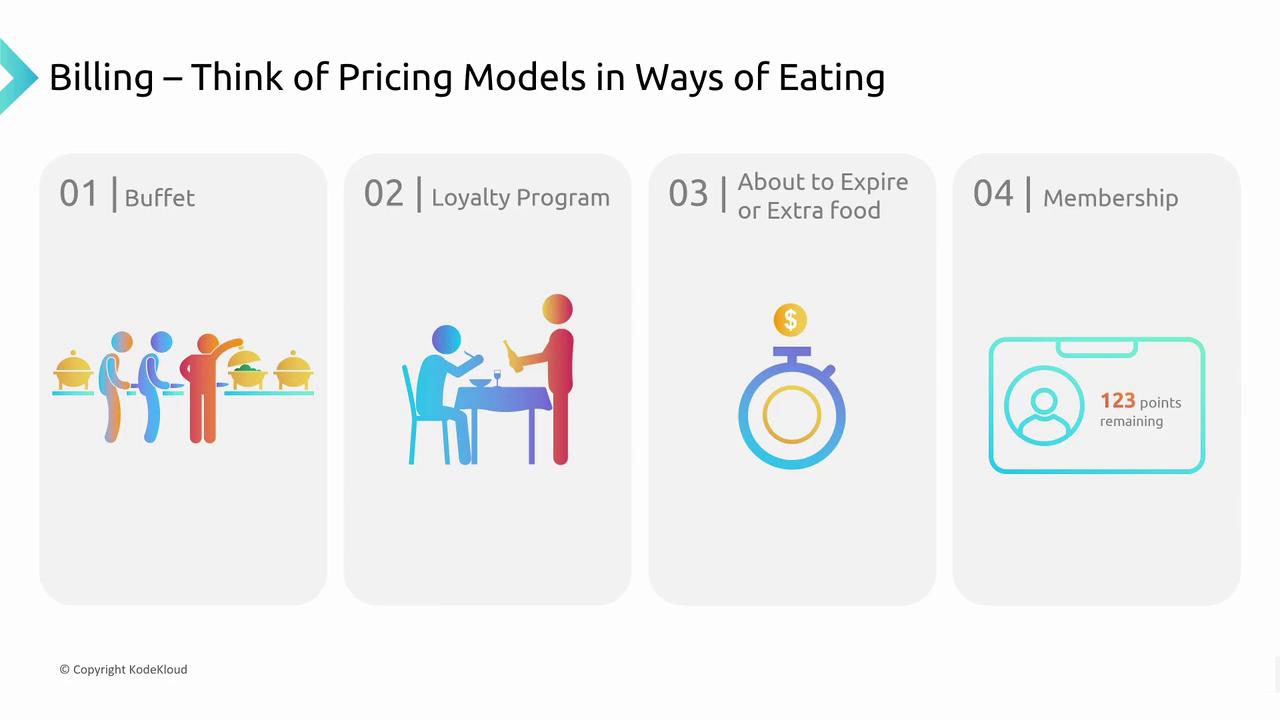
To put it simply:
- On-Demand: Like a buffet—you pay only for what you eat.
- Savings Plans: Similar to a loyalty program, offering added benefits for an upfront commitment.
- Spot Instances: Comparable to buying surplus stock at discounted prices, with the risk of the offer ending.
- Reservations: Like a membership where you reserve capacity in advance, whether or not fully used.
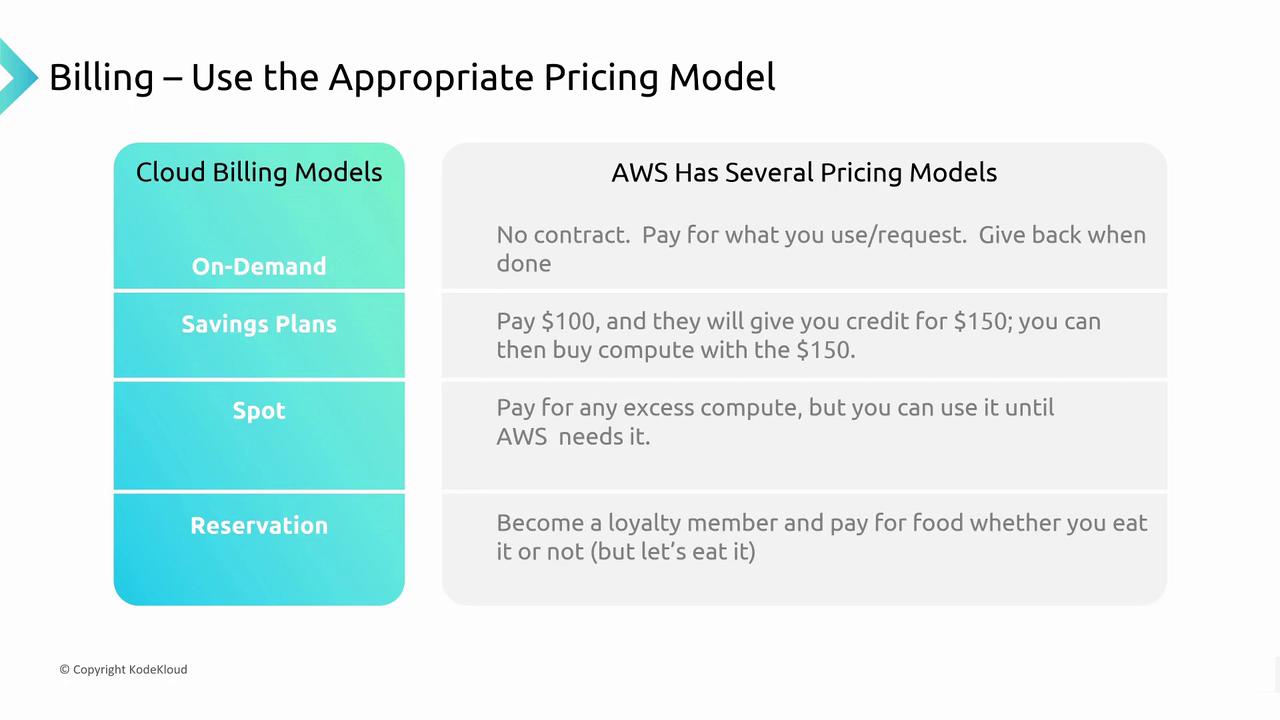
The Free Tier
The AWS Free Tier is an excellent way to explore and experiment with AWS services without incurring costs. It includes:
- Short-term free trials for select services.
- A 12-month free usage period for a range of popular services.
- Always-free services that remain free indefinitely.
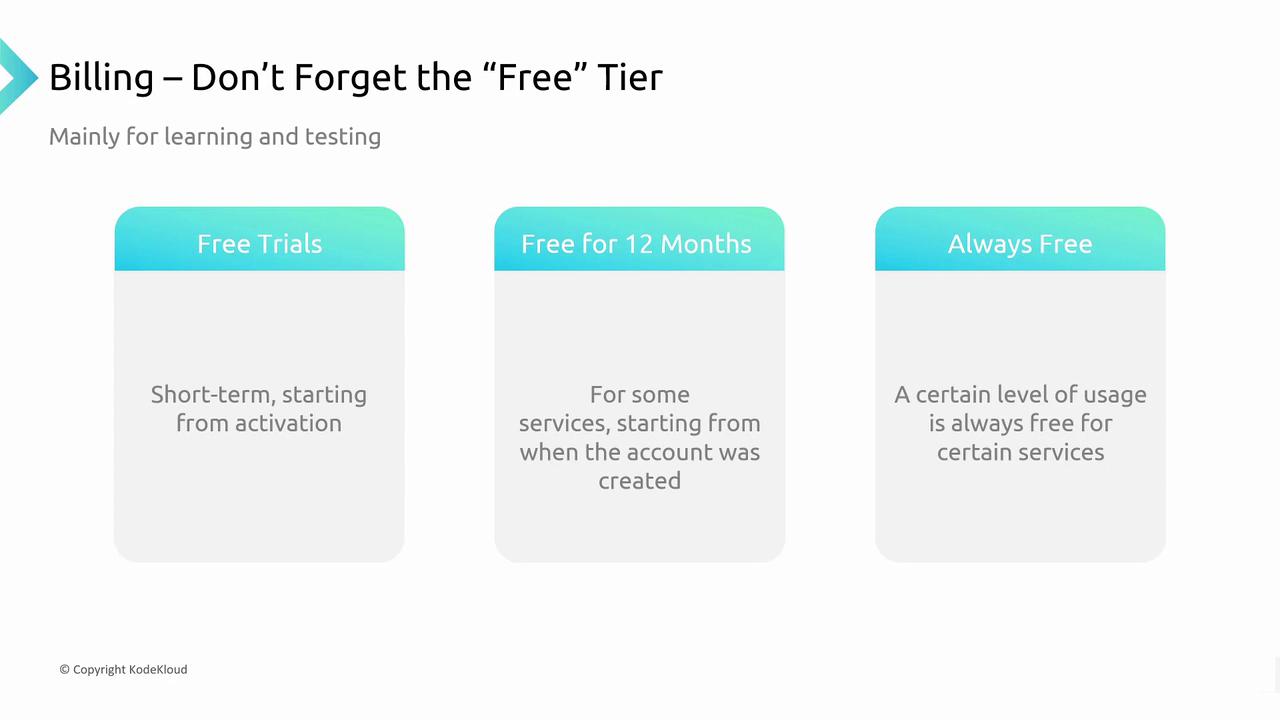
Getting Started
Take advantage of the AWS Free Tier to learn and prototype without upfront costs.
Summary
AWS billing is predominantly usage-based, determined by compute, storage, and networking dimensions. Key points include:
- Compute: Costs are associated with the number of processors and memory usage over time.
- Storage: Fees depend on how much data is stored and for how long.
- Networking: Charges accrue for outbound data transfer.
Effective cost management involves understanding these cost components, optimizing resource usage, leveraging autoscaling, and choosing the right pricing model. Additionally, using the Free Tier for experimentation can further enhance your learning and development experience.
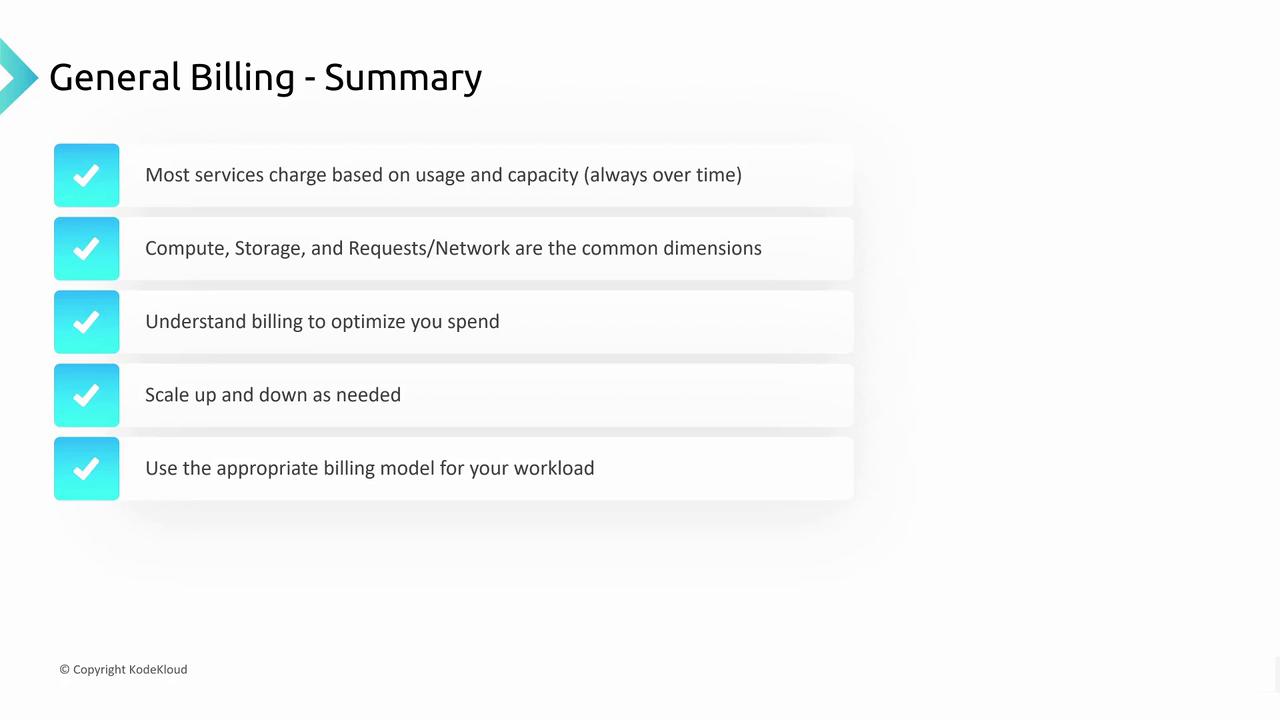
This concludes our lesson on general billing in AWS. Use these insights to plan, optimize, and scale your AWS deployments efficiently. Happy learning!
For more detailed information on AWS billing and pricing strategies, visit the AWS Documentation.
Watch Video
Watch video content